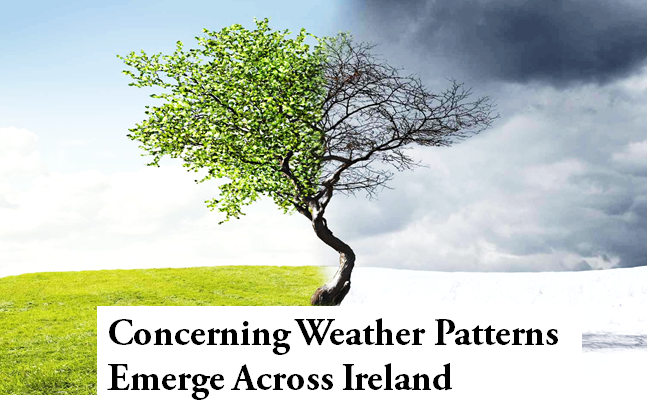Dublin: Fluctuating weather patterns in Ireland have become a topic of both intrigue and concern. Meteorologists attribute the sudden swings between heat and cold to global climate change, noting how these extremes are impacting the daily lives of the Irish people.
In June, when sandals and shorts are typically appropriate attire, scarves and gloves are now necessary to combat the unexpected chill. Continuous rainfall adds to this unusual weather scenario. The media and meteorologists are actively discussing the reasons behind these erratic weather patterns.
Climate change is linked to rising global temperatures..
According to the Met Office, climate change is linked to rising global temperatures, which can lead to more frequent and severe heatwaves and droughts, resulting in heavier rainfall. Recently, Ireland experienced temperatures above 20 degrees Celsius for ten consecutive days. The absence of cold Arctic air allowed the Atlantic climate to moderate temperatures somewhat. However, low pressure moving from the northwest is expected to bring more unsettled conditions by the weekend.
In May 2024, Ireland experienced its hottest month on record in 125 years, as noted by Met Éireann meteorologist Paul Moore. A warm, cloudy air mass formed over the country, preventing nighttime temperatures from dropping, which contributed to this record-breaking heat.
As June began, a period of dry and warm weather was observed due to high pressure over Ireland and to the west, resulting in weak weather conditions. A cloudy north-westerly air stream moved in, and a cold Arctic air mass formed from the north. Low pressure developed in Scandinavia, blocking moderate airflow from the west and south-west. This high-pressure system in the west and the low pressure in Scandinavia brought cold Arctic air to Ireland, a phenomenon observed in early June of previous years, albeit less severe.
Meteorologist Prof. John Sweeney explains that similar conditions were noted in June 2019 when pressure formed over Greenland and downstream, affecting Ireland and the UK. This led to cold, uncertain weather, with temperatures slightly above the normal June average. The high pressure in the Atlantic blocked the jet stream, which moved south from Greenland towards Ireland, strengthening the cold Arctic air masses.
Human-induced climate change is driving global temperature increase…
A recent report from the Meteorological Organisation highlights that human-induced climate change is driving global temperature increases, leading to more frequent extreme weather events. The report suggests there is an 80% chance that average global temperatures will rise 1.5 degrees Celsius above pre-industrial levels within the next five years. The report also predicts that over the next five years, global average temperatures will rise by 1.1 to 1.9 degrees above the average for the years 1850 to 1900.
Historically, Clonsast in Offaly recorded -3.3 degrees Celsius on June 1, 1962, the lowest daily temperature in Ireland’s summer history. However, the cold experienced this year, despite no significant drop in temperature, is particularly notable to meteorologists.
Irish Samachar English News
{OR} Kindly click to follow the Irish Samachar News channel on WhatsApp


Comments are closed.